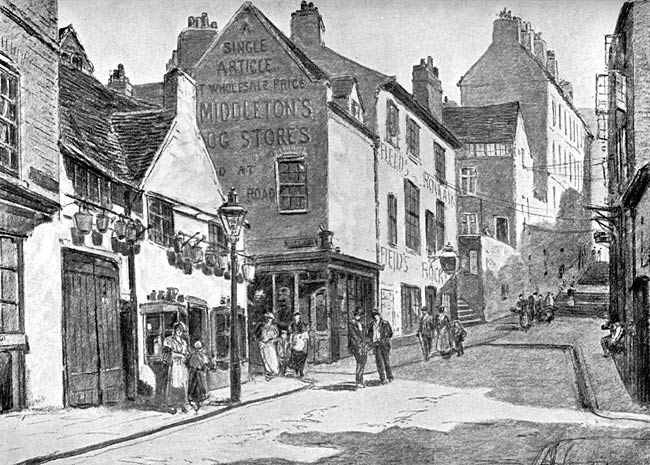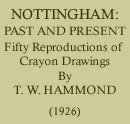< Previous | Contents | Next >
NOTTINGHAM PAST & PRESENT: STREETS AND YARDS
MIDDLE MARSH, 1889

The advent of modern railway conditions has very much altered the aspect of central Nottingham, and in this drawing we see what this part of the town looked like before these alterations were undertaken. It shows a short street called Middle Marsh, and on the left, just out of the picture, is the corner of Broad Marsh. The turning by the lamp-post is the begin-ing of the steep incline called Drury Hill—in memory of Alderman Drury who owned property at the top about the year 1645. On the right is the exit from Narrow Marsh, now a particularly unpleasant district, but at one time quite a good class residential neighbourhood. Before the days of wheeled traffic, one of the routes through Nottingham came from Trent Bridge along London Roaa, Narrow Marsh and up the steep Drury Hill.
Straight ahead are the steps leading up to Garners Hill or as it was called 'Brightmore Hill.' On these steps in the year 1844 a very terrible accident occurred : a criminal named Saville had been executed outside the Shire Hall and an enormous crowd had witnessed the tragedy; in endeavouring to get away after the execution, panic broke out among the crowd, and a great many people were pushed down the steps of Brightmore Hill; twelve were killed and more than a hundred injured before order was restored.
Just to the left of these steps is another flight which leads up to Middle Hill. This was the ancient route to the daily market at Weekday Cross.
